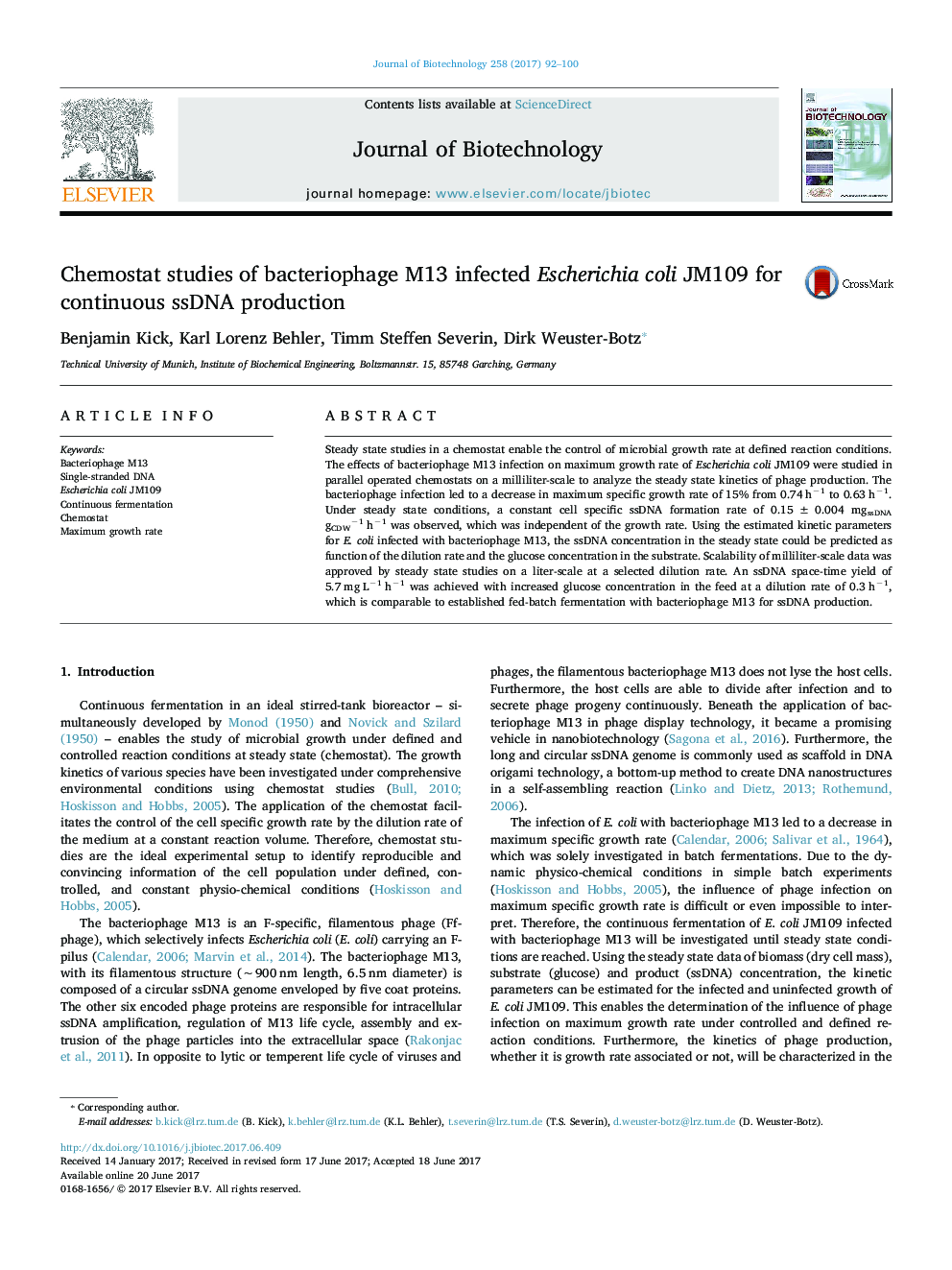| Article ID | Journal | Published Year | Pages | File Type |
|---|---|---|---|---|
| 6452029 | Journal of Biotechnology | 2017 | 9 Pages |
â¢Chemostat studies were performed in milliliter scale stirred-tank bioreactors.â¢Bacteriophage M13 infection reduces maximal growth rate of E. coli by 15%.â¢The cell specific ssDNA formation rate is constant at different growth rates.â¢Prediction of ssDNA space-time yield was demonstrated using kinetic model.
Steady state studies in a chemostat enable the control of microbial growth rate at defined reaction conditions. The effects of bacteriophage M13 infection on maximum growth rate of Escherichia coli JM109 were studied in parallel operated chemostats on a milliliter-scale to analyze the steady state kinetics of phage production. The bacteriophage infection led to a decrease in maximum specific growth rate of 15% from 0.74 hâ1 to 0.63 hâ1. Under steady state conditions, a constant cell specific ssDNA formation rate of 0.15 ± 0.004 mgssDNA gCDWâ1 hâ1 was observed, which was independent of the growth rate. Using the estimated kinetic parameters for E. coli infected with bacteriophage M13, the ssDNA concentration in the steady state could be predicted as function of the dilution rate and the glucose concentration in the substrate. Scalability of milliliter-scale data was approved by steady state studies on a liter-scale at a selected dilution rate. An ssDNA space-time yield of 5.7 mg Lâ1 hâ1 was achieved with increased glucose concentration in the feed at a dilution rate of 0.3 hâ1, which is comparable to established fed-batch fermentation with bacteriophage M13 for ssDNA production.
